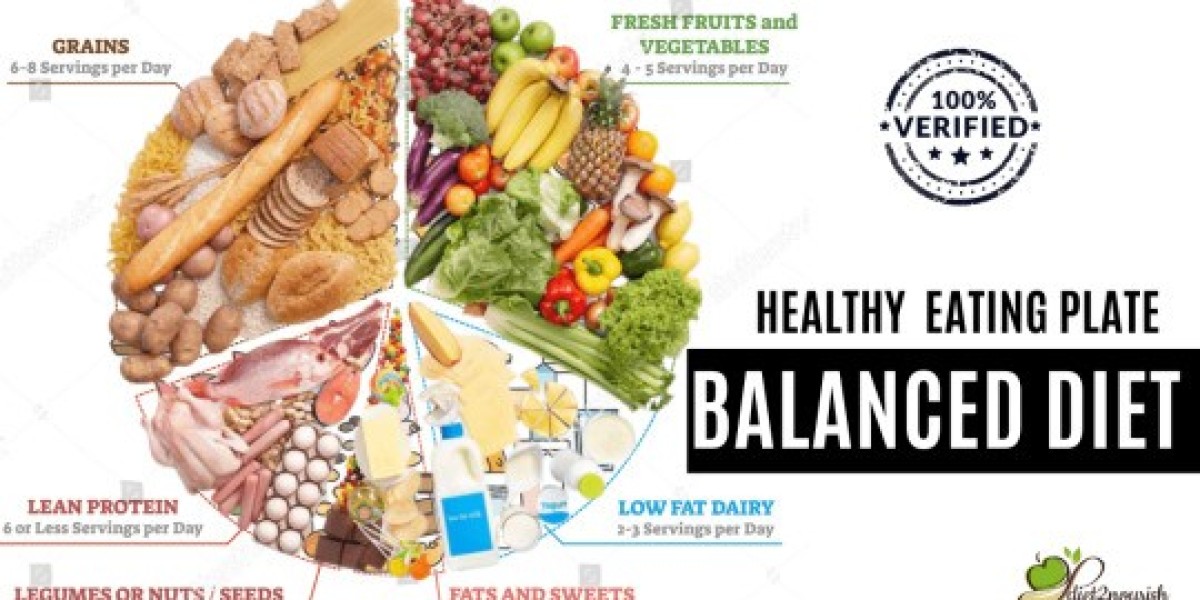What is a Healthy Diet?
A healthy diet is one that promotes physical and mental health while minimizing the risk of diet-related diseases. It focuses on consuming a variety of foods that provide a well-balanced combination of macronutrients (carbohydrates, proteins, and fats) and micronutrients (vitamins and minerals). A healthy diet is not about deprivation but rather about making informed, mindful choices that nourish the body.
Key Components of a Healthy Diet chart
Fruits and Vegetables: These should form a substantial part of your daily diet. Fruits and vegetables are rich in vitamins, minerals, antioxidants, and dietary fiber. Aim for a colorful variety to ensure a broad range of nutrients.
Whole Grains: Choose whole grains over refined grains whenever possible. Whole grains like brown rice, quinoa, oats, and whole wheat bread are higher in fiber and nutrients.
Lean Proteins: Incorporate sources of lean protein into your diet, such as poultry, fish, tofu, legumes (beans, lentils), and lean cuts of meat. Protein is essential for muscle maintenance, immune function, and overall health.
Healthy Fats: Prioritize sources of healthy fats, such as avocados, nuts, seeds, olive oil, and fatty fish like salmon. These fats support brain health, hormone production, and overall well-being.
Dairy or Dairy Alternatives: Low-fat or fat-free dairy products (or dairy alternatives like almond or soy milk) are good sources of calcium and vitamin D, crucial for bone health.
Probiotic-Rich Foods: Incorporate fermented foods like yogurt, kefir, sauerkraut, and kimchi to support gut health.
Nuts and Seeds: These are excellent sources of healthy fats, protein, and various nutrients. A small handful as a snack or salad topping can provide numerous benefits.
Water: Staying hydrated is a vital aspect of a healthy diet. Water plays a critical role in digestion, circulation, temperature regulation, and overall bodily functions.
Herbs and Spices: Use herbs and spices like basil, turmeric, garlic, and ginger to add flavor to your dishes without relying on excessive salt or unhealthy condiments.
Benefits of a Healthy Diet chart
A healthy diet offers a multitude of benefits for both physical and mental health:
Optimal Nutrition: It ensures that your body receives the necessary nutrients for growth, repair, and maintenance.
Weight Management: A healthy diet can help control body weight by providing balanced, portion-controlled meals and promoting better metabolic function.
Improved Heart Health: It reduces the risk of heart disease by lowering cholesterol levels, blood pressure, and inflammation.
Stable Blood Sugar: A healthy diet can help prevent or manage diabetes by regulating blood sugar levels.
Strong Bones: Adequate calcium and vitamin D intake supports bone health and reduces the risk of osteoporosis.
Enhanced Digestion: High-fiber foods from fruits, vegetables, and whole grains promote healthy digestion and regular bowel movements.
Mental Well-Being: Proper nutrition can positively impact mood and cognitive function, reducing the risk of depression and cognitive decline.
Reduced Risk of Chronic Diseases: A healthy diet may lower the risk of chronic conditions like type 2 diabetes, hypertension, certain cancers, and Alzheimer's disease.
Practical Tips for Achieving a Healthy Diet
Meal Planning: Create a weekly meal plan that includes a variety of foods from all food groups. Planning meals in advance can help you make healthier choices and reduce reliance on fast food or unhealthy snacks.
Portion Control: Be mindful of portion sizes to avoid overeating. Using smaller plates and bowls can help control portion sizes.
Read Labels: When shopping, check nutrition labels on packaged foods to make informed choices. Look for products with lower saturated fat, added sugars, and sodium content.
Cook at Home: Preparing meals at home gives you control over ingredients and cooking methods, making it easier to create nutritious dishes.
Limit Processed Foods: Minimize the consumption of processed foods high in additives, preservatives, and unhealthy fats. Opt for fresh, whole foods whenever possible.
Snack Smartly: Choose healthy snacks like fruits, vegetables, yogurt, or a small handful of nuts instead of sugary or high-calorie snacks.
Stay Hydrated: Drink water throughout the day, and consider water-rich foods like cucumber and watermelon.
Mindful Eating: Slow down and savor your meals. Eating mindfully can help you recognize hunger and fullness cues, preventing overeating.
Variety is Key: Incorporate a wide range of foods into your diet to ensure you receive diverse nutrients.
Listen to Your Body: Pay attention to your body's hunger and fullness cues. Eat when you're hungry, and stop when you're satisfied.
Moderation: Enjoy indulgent foods occasionally but in moderation. A healthy diet allows for occasional treats without guilt.
Professional Guidance: If you have dietary restrictions, specific health concerns, or are considering major dietary changes, consult a registered dietitian or healthcare professional for personalized guidance.
In conclusion, a healthy diet is fundamental for overall well-being. It involves consuming a variety of nutrient-rich foods in balanced proportions. By prioritizing whole, minimally processed foods and practicing moderation, you can enjoy the numerous benefits of a healthy diet, from improved physical health to enhanced mental well-being. Remember that individual dietary needs and preferences may vary, so it's important to tailor your diet to your unique goals while adhering to the principles of balanced nutrition and variety.


